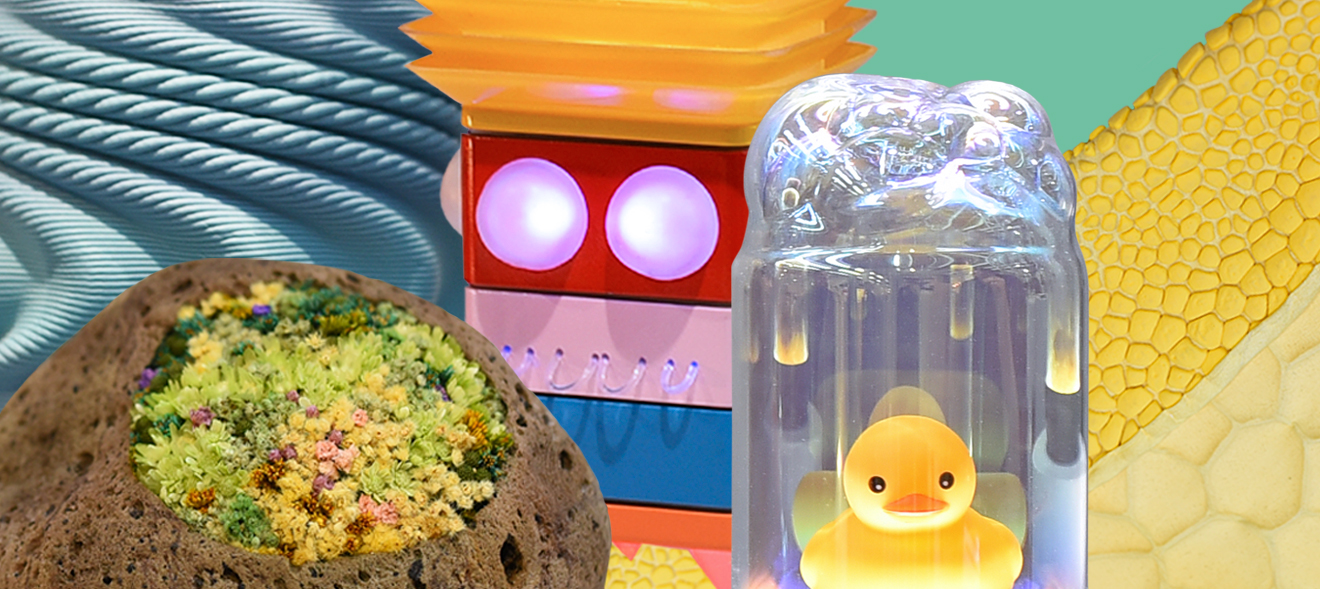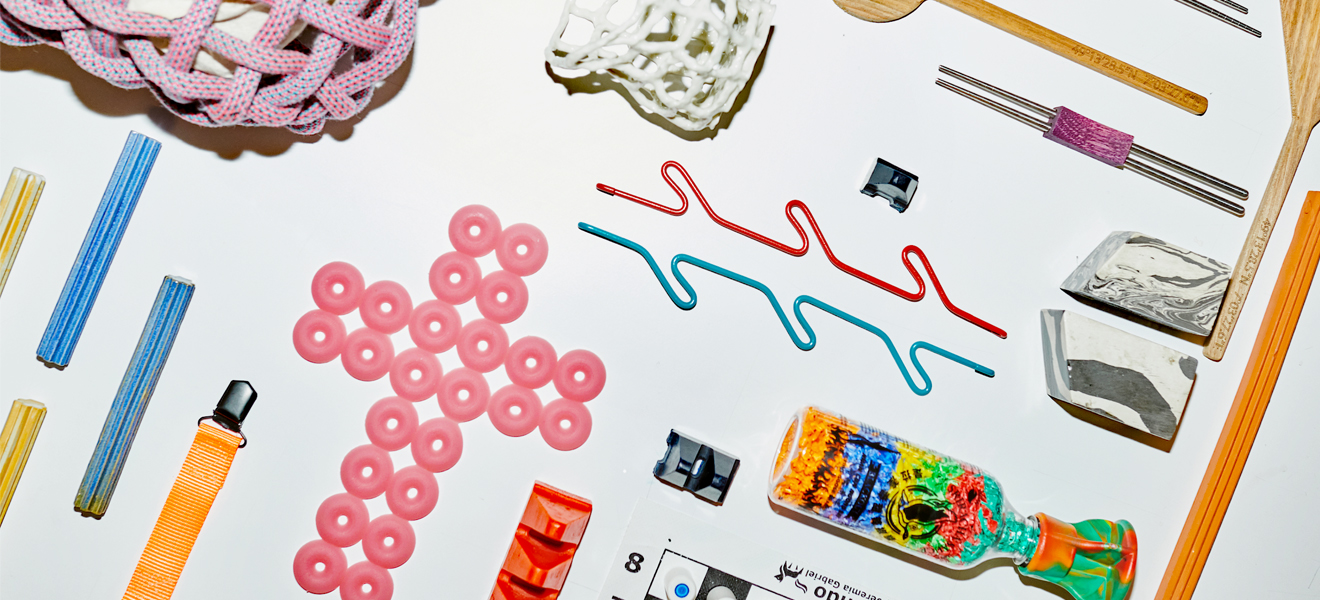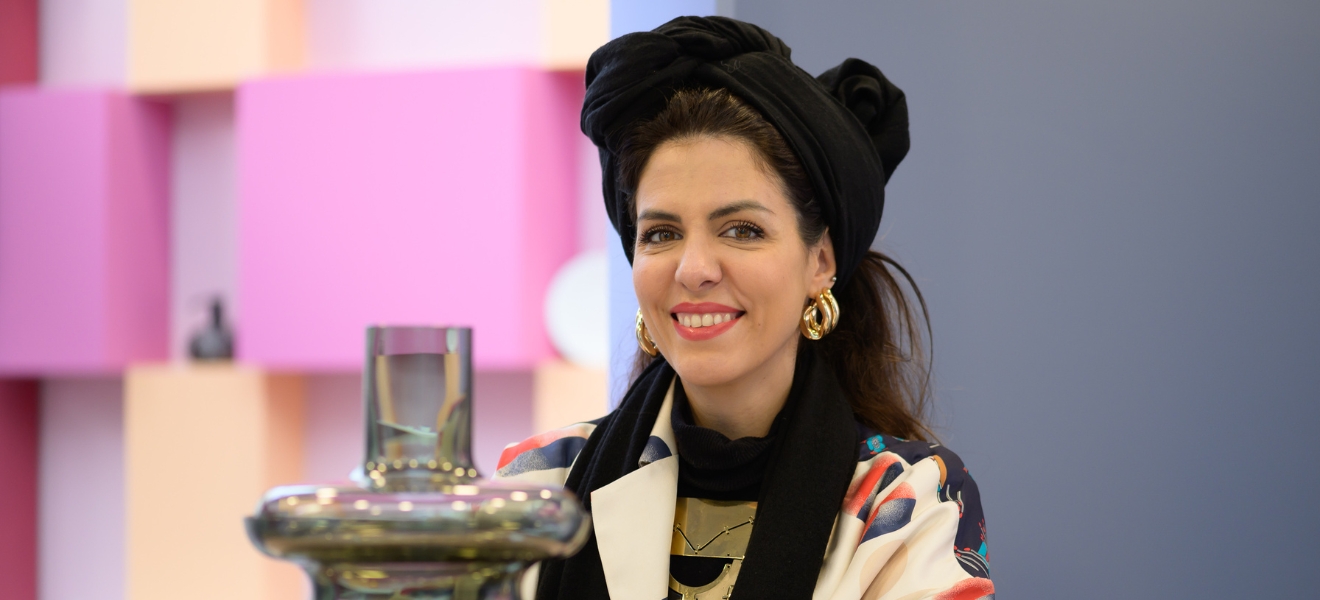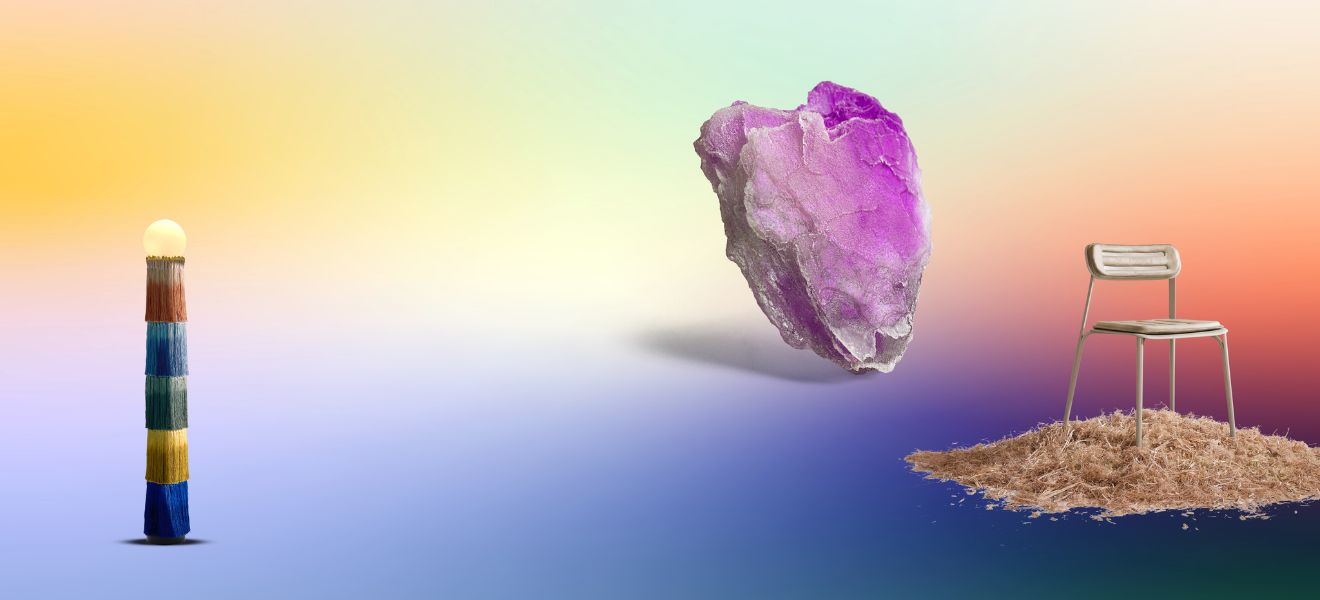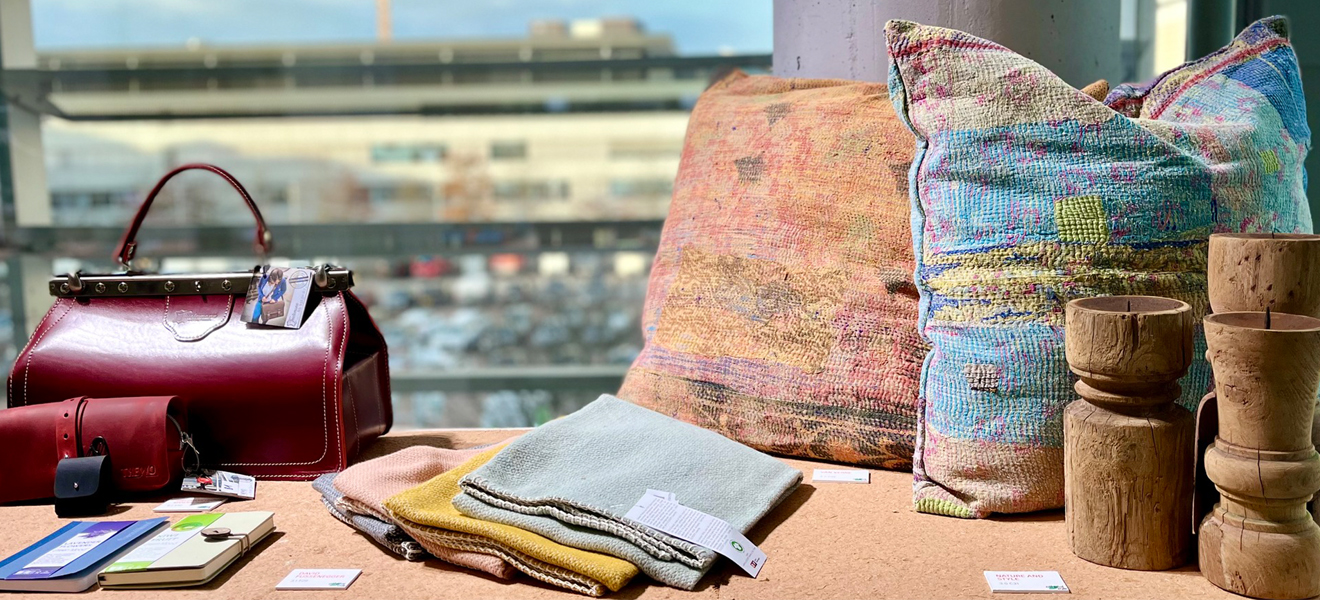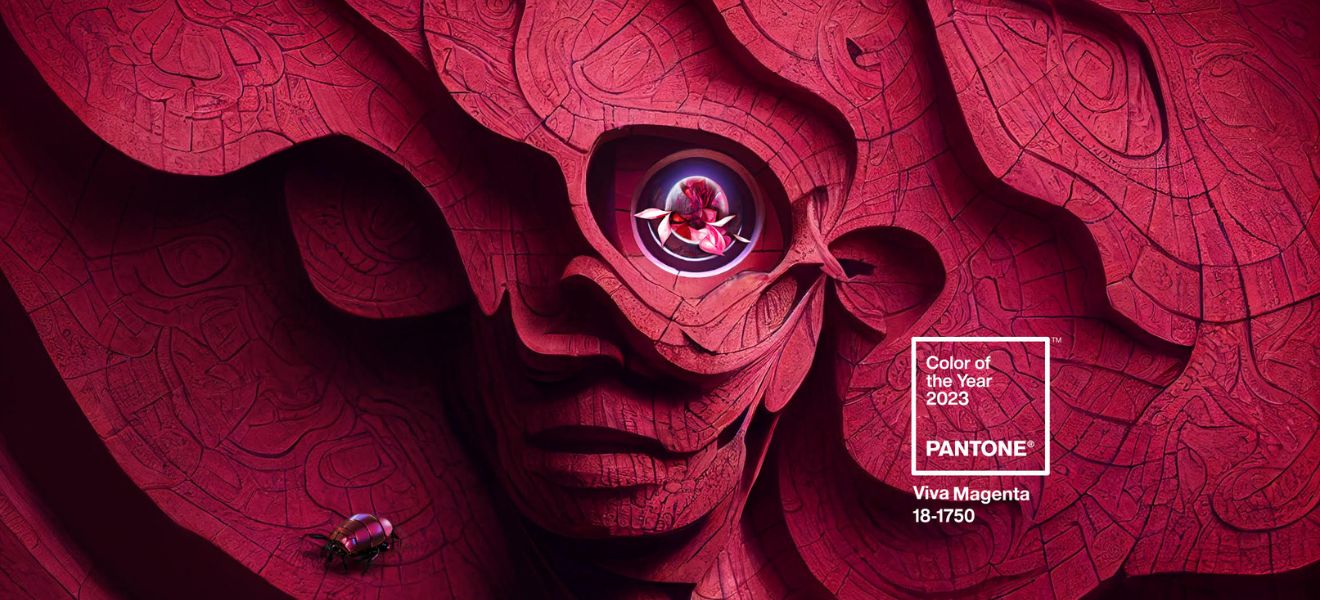How best to create comfort in the digital age? This year, many of the interior design Talents at Ambiente occupied the interface between analogue living spaces and digital production. They showcased new design with surprising, humorous and even poetic results.
You certainly won’t have seen porcelain like this before. Additive Addicted’s vases and vessels in maritime hues appear to be constantly shifting, as if waves are rippling through the objects. In places, the material appears to change direction: a swerve to the left or right, then back in the opposite direction, where porcelain rises up in fine grooves or relief patterns. Sometimes the material moves sideways, seemingly laid in loose layers like a scarf.
Babette Wiezorek’s digital porcelain workshop explores the potential of combining digital with analogue manufacturing. The product designer from Berlin explains: “I want to push the boundaries of technology.” She’s worked with ceramics from an early age, and later began experimenting with a ceramic printer which she built herself. The artist – and the technological possibilities – are now more mature, although technology alone is no guarantee of creating compelling products. “Ultimately, the result needs to make aesthetic sense,” states Wiezorek. She’s not interested in simply creating gimmicky effects. “I use the technical production possibilities, not because they’re available, but because I couldn’t realise my ideas otherwise.” She explains that achieving such high relief in her work would not be possible using manual techniques – here she points to a marine-blue vase with a surface reminiscent of a knitting pattern.


Nostalgia is back
High-tech meets handcrafted, and in between these extremes lie the works of many of this year’s Talents at the Ambiente Living area. Many of these up-and-coming designers explore the question of how to create sensory experiences in a digital era. How can new design meet this need? According to Bodin Hon of Yellowdot Design: “It’s very easy to forget things these days”. After all, everything is stored somewhere, and if we can’t remember dates and events then our smartphones can take up the slack. In objects such as the Bubbling Light Dome, he and Dilara Kan offer an analogue alternative. This Hong Kong design duo develop furniture and objects which aim to present selected souvenirs in just the right way. If you’re thinking ‘cabinet of curiosities’ with lots of little display cases, you’re exactly right. Small display boxes come equipped with colourful, fleecy ‘floors’, while others house fragrant crystals. The mouth blown glass Bubbling Light Dome doesn’t actually contain any soap bubbles, but its specially shaped cloche has an iridescent finish which creates the illusion of the moment just before the bubbles burst.

Out-of-the-ordinary objects created by Kamehikoworks promise a sensory experience. These palm-sized pumice stones are inlaid with hundreds of petals to give the impression of a living souvenir from a walk across woods and meadows. This impression is intensified by a powerful aroma from essential oils drizzled over the bright petals. Norihiko Kamei describes his idea for a new design object as “a piece of nature in your hands”. It is a real departure from the other products in his range and evokes a certain sense of nostalgia. The volcanic rock is from Japan, as are the coloured petals – which the designer affixes individually using tweezers. This takes around an hour per object. When he’s finished, each stone will boast a carpet of 200 to 300 petals – either dyed gypsophilia (baby’s breath) or small rice flowers. In keeping with the sense of ritual, Kamehiko supplies a suitable fragrance blend for each different colour variation: Colour Wind, Pale Wind, Green Wind and Nostalgic Wind.

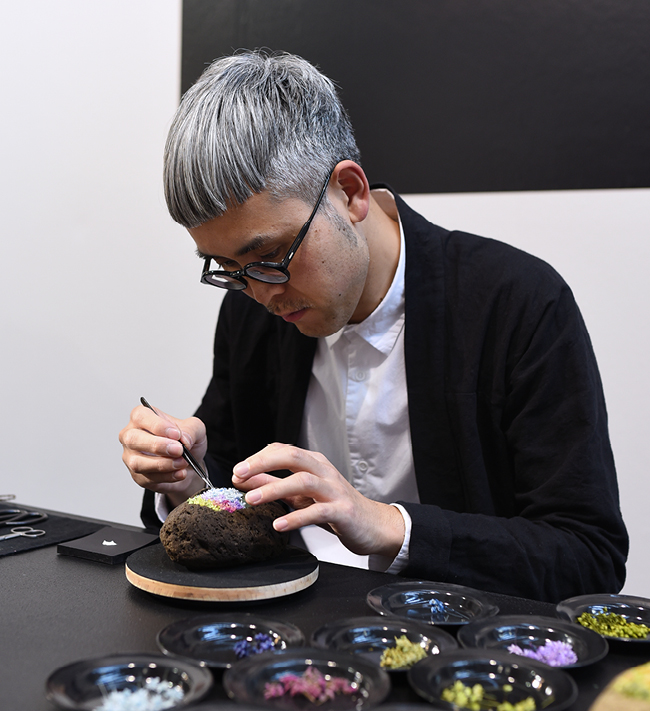
Technology is more fun
We walked a few metres further on to see Nikolas Miranda stacking his brightly coloured lights in new combinations. Mayamot is a plug-in lighting system he developed himself, which has already garnered some great publicity – maybe because his creation looks a lot like a toy aimed at adults but also fulfils a very practical function. Miranda’s priority was for it to work perfectly, not just to look good. Each element has around 200 LEDs in an MDF module which he builds himself. He carefully paints each one and applies acrylic glass. Nikolas is from Münster and explains: “I trained as a joiner”. Yet he eventually found this work on its own too restrictive, and now attends a specialist design academy for craftspeople. This brightly coloured, stackable system with pop art appeal was Miranda’s “attempt to avoid being boring”, or at least that’s how he translates what ‘mayamot’ means in Tagalog, the language from the Philippines which his father speaks. We think he has succeeded! Mayamot is technically ingenious, playfully executed and can be combined and recombined however you like. We bet many visitors to Ambiente are hoping he can produce Mayamot on a larger scale soon.


The Shape of Colour rug, presented by studio anima ona, looks and feels fascinating. This collective operates at the interface between practical design and design research.

They see this rug as “an abstraction of the traditional, hand-woven” type. The pattern is printed directly onto the fabric, and the reverse side is created using the new production technology GRDXKN. Behind this unpronounceable acronym is a method for structurally printing colour onto textiles, producing genuine three-dimensional effects: the Shape of Colour rug is not just a deep yellow colour, it also rises up from the floor in relief. The textile printing ink lends the rug acoustic insulation and anti-slip properties. Freia Achenbach explains that this is work in progress and the Shape of Colour rug is just a stepping stone in their research. Anima ona also intend to look further into what new design means these days. What opportunities do specific techniques and production methods open up for their work, and what impact will the technical possibilities have on design?

